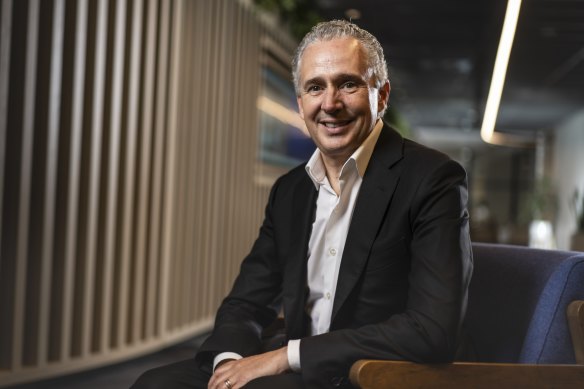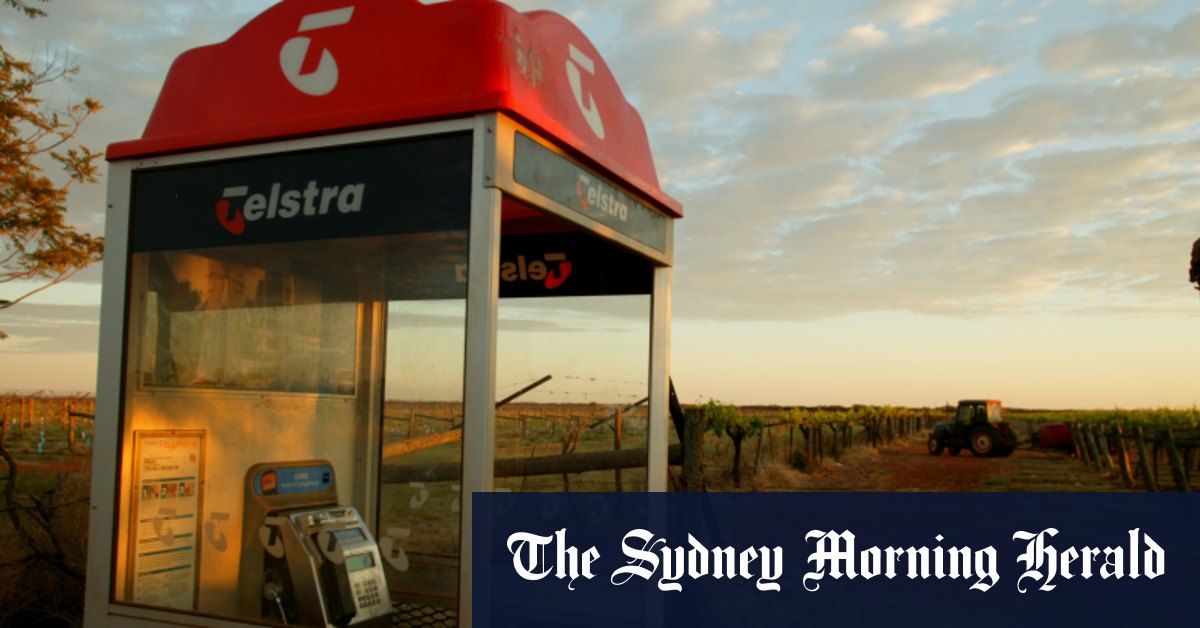Telstra will reward shareholders with a long-desired dividend boost, increasing the payments to 16.5 cents a share despite a slight fall in net profit and income for the financial year.
Revenue fell 4.7 per cent from $23.1 billion to $22 billion despite growth in the mobile services division, while earnings before interest, tax, depreciation and amortization was $7.3 billion, a fall of 5 per cent. Net profit for the year was $1.8 billion, down 4.6 per cent.

The results are the last for outgoing CEO Andy Penn.Credit:Eamon Gallagher
The company will pay a fully franked final dividend of 8.5 cents per share. The increase to the total dividend marks the first time the telco giant has upped its payment to shareholders since 2015. It is also the highest dividend to be paid since 2019. It will be paid on September 22.
Telstra’s results are the final under outgoing chief executive Andy Penn who began his role in 2015. He will be replaced by his chief financial officer Vicki Brady at the end of the month. He spent his final speech focusing on the success of his T22 strategy, a multi-year effort which involved dramatically cutting costs and restructuring the business.
loading
“When we launched our T22 strategy four years ago, we were in part responding to the operational and financial headwinds created by the rollout of the NBN. We were also responding to the technology innovation we could see around us and the growing rate of digital adoption,” Penn said.
“Telstra is a very different company today and while of course there is always more to do, we are much better equipped to face the very exciting digital future ahead.”
The results were within Telstra’s guidance and analyst expectations, but were affected by the tail end of NBN headwinds, specifically the cost of migrating customers onto the broadband network. Penn said it had been a “large and difficult pill to swallow.”
Telstra’s mobile division grew 6.4 per cent to $4 billion, but other divisions continued to be impacted by NBN migrations and restructuring costs.
